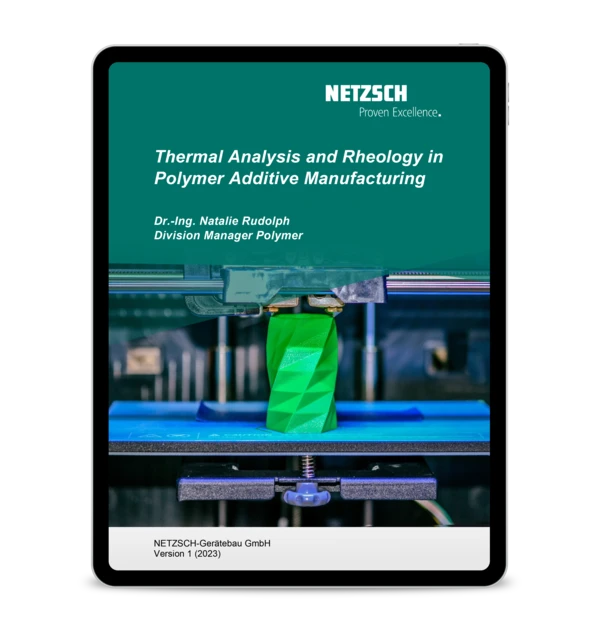
18.11.2020 by Milena Riedl, Dr. Natalie Rudolph
Vat Photopolymerization: Material Science in Additive Manufacturing
This week, the spotlight is on the Additive Manufacturing technology Vat Photopolymerization (VP, SLA, DLP). I explain the general process principle and its variations. Furthermore, I look at the material class that is Adiabatic temperature riseThe adiabatic temperature rise (delta Tad) is the observed temperature rise (delta Tobs) of a self-heating decomposition reaction under adiabatic conditions in consideration of the PHI-factor.commonly used and discuss benefits and applications of the process.
Last week, I focused on generating a common understanding of Additive Manufacturing (AM), the different categories and tradenames along with the typical process flow.
Deep Dive on Vat Photopolymerization
This week, the spotlight is on the Additive Manufacturing technology Vat Photopolymerization (VP, SLA, DLP). I explain the general process principle and its variations. Furthermore, I look at the material class that is commonly used and discuss benefits and applications of the process. Finally, I explain a unique variation of the AM technology which is suitable for high volume manufacturing.
Process Principle of Vat Photopolymerization (VP, SLA, DLP)
The focus of the next videos will be on Vat Photopolymerizaton (VP), often called stereolithography or SLA. In this video, I explain the process principle of the additive manufacturing technology.
Process Variations of Vat Photopolymerization
I talk about the process variations of Vat Photopolymerization. I discuss the three different approaches to Curing (Crosslinking Reactions)Literally translated, the term “crosslinking“ means “cross networking”. In the chemical context, it is used for reactions in which molecules are linked together by introducing covalent bonds and forming three-dimensional networks.curing the resin as well as the variations in platform and build movement (top down and bottom up) for this additive manufacturing technology.
Material Enabling Vat Photopolymerization
The secret to Vat Photopolymerization is the material. I discuss the material class that enables this additive manufacturing process and explain its main characteristics that make the material suitable for additive manufacturing.
Benefits and Applications of Vat Photopolymerization
What are the advantages and applications of Vat Photopolymerization? This video gives insight into the benefits and disadvantages of this additive manufacturing technology. Furthermore, I will point out the applications where Vat Photopolymerization is used today.
CLIP: A Unique Variation of the Vat Photopolymerization Process
I take a closer look at a unique variation of Vat Photopolymerization, which is called Continuous Liquid Interface Production (CLIP). I explain why this process is suitable for high volume manufacturing and look into its benefits and applications in various industries.
Building a Community
This video series is not a one-way road! Please leave your questions in the YouTube commentary. We will answer your questions and use them to fill our pool of questions from which we will choose the most frequently asked ones to be answered in our live events throughout 2021. Furthermore, we encourage you to have discussions in the comment section to also learn from and challenge your peers.
Next week, we will focus on Polymer Powder Bed Fusion. Keep your eyes peeled!

FREE E-Book
Thermal Analysis and Rheology in Polymer Additive Manufacturing
Discover the secrets behind AM's game-changing capabilities! Our newly released ebook delves deep into the heart of AM, unveiling the power of reliable material characterization techniques, specifically thermal analysis and rheology.